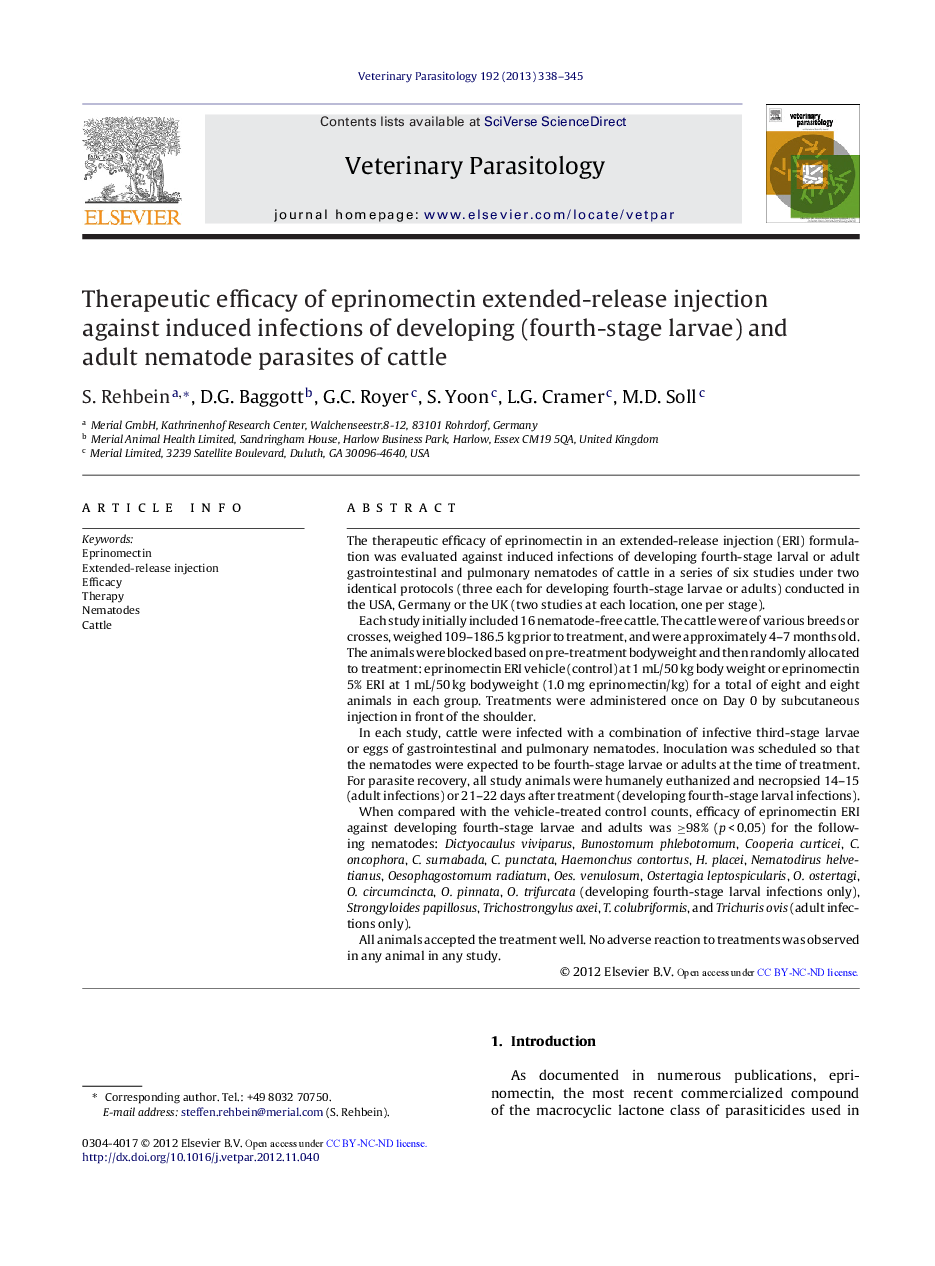| Article ID | Journal | Published Year | Pages | File Type |
|---|---|---|---|---|
| 2470092 | Veterinary Parasitology | 2013 | 8 Pages |
The therapeutic efficacy of eprinomectin in an extended-release injection (ERI) formulation was evaluated against induced infections of developing fourth-stage larval or adult gastrointestinal and pulmonary nematodes of cattle in a series of six studies under two identical protocols (three each for developing fourth-stage larvae or adults) conducted in the USA, Germany or the UK (two studies at each location, one per stage).Each study initially included 16 nematode-free cattle. The cattle were of various breeds or crosses, weighed 109–186.5 kg prior to treatment, and were approximately 4–7 months old. The animals were blocked based on pre-treatment bodyweight and then randomly allocated to treatment: eprinomectin ERI vehicle (control) at 1 mL/50 kg body weight or eprinomectin 5% ERI at 1 mL/50 kg bodyweight (1.0 mg eprinomectin/kg) for a total of eight and eight animals in each group. Treatments were administered once on Day 0 by subcutaneous injection in front of the shoulder.In each study, cattle were infected with a combination of infective third-stage larvae or eggs of gastrointestinal and pulmonary nematodes. Inoculation was scheduled so that the nematodes were expected to be fourth-stage larvae or adults at the time of treatment. For parasite recovery, all study animals were humanely euthanized and necropsied 14–15 (adult infections) or 21–22 days after treatment (developing fourth-stage larval infections).When compared with the vehicle-treated control counts, efficacy of eprinomectin ERI against developing fourth-stage larvae and adults was ≥98% (p < 0.05) for the following nematodes: Dictyocaulus viviparus, Bunostomum phlebotomum, Cooperia curticei, C. oncophora, C. surnabada, C. punctata, Haemonchus contortus, H. placei, Nematodirus helvetianus, Oesophagostomum radiatum, Oes. venulosum, Ostertagia leptospicularis, O. ostertagi, O. circumcincta, O. pinnata, O. trifurcata (developing fourth-stage larval infections only), Strongyloides papillosus, Trichostrongylus axei, T. colubriformis, and Trichuris ovis (adult infections only).All animals accepted the treatment well. No adverse reaction to treatments was observed in any animal in any study.
